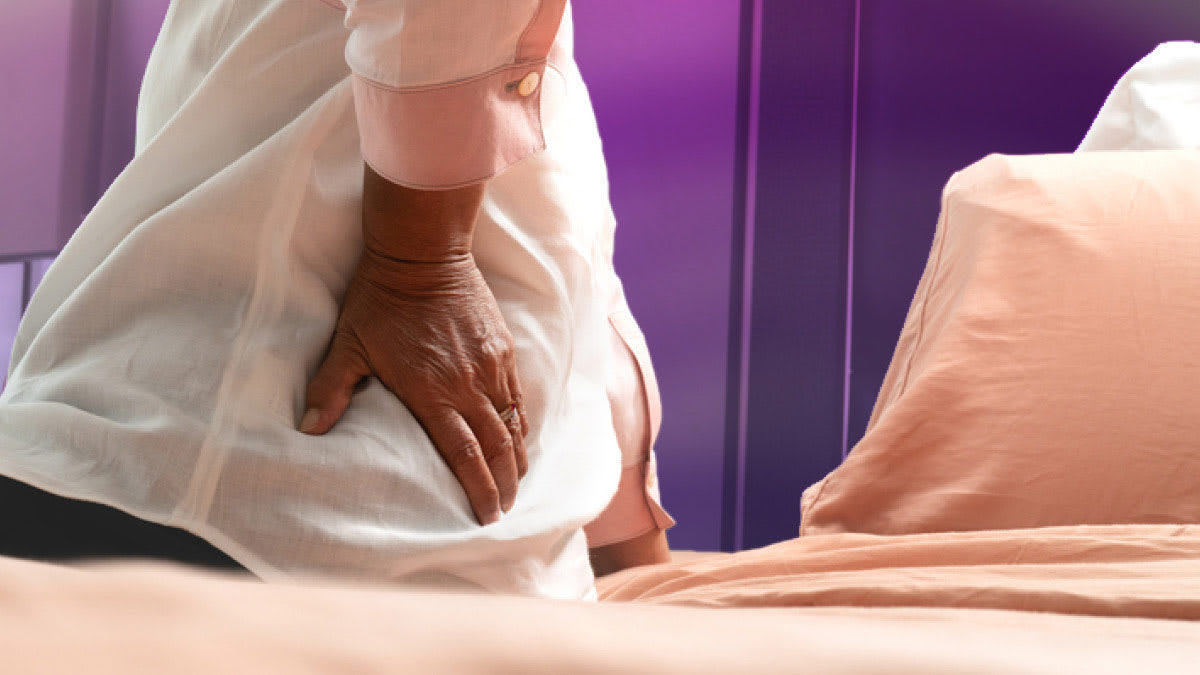Certain positions can put extra strain on your hip, so it’s a good idea to be deliberate about the way you sleep. You’ll want to avoid sleeping on your stomach. Michelle Drerup, director of behavioral sleep medicine at the Cleveland Clinic Sleep Disorders Center, says this position forces the spine into an unnatural curve and can put significant strain on the hips and lower back.
“Try to sleep on your side with a pillow between your knees,” Drerup says. “That helps keep your hips aligned and reduces strain on the lower back.”
Physical therapist Karen Gstalder-Dring, of Irvington, N.Y., says a longer pillow is a good choice: “You want to have that pillow underneath the full length of the leg, not just under your knee, because that could cause your hip to rotate.” Taller people may need a king-size pillow.
Drerup says sleeping in the fetal position can also be a good option: “Curling up on your side with knees drawn toward your chest can open up the hip joint, alleviating pressure.”
You might be wondering if it’s even possible to control your sleep position. Aren’t we at the mercy of our unconscious when we’re out cold? There are tricks: Some pros suggest creating a “disturbance” by sewing a super ball or even a tennis ball into your pajamas, which will let you know if you shift into a less-than-optimal position. Gstalder-Dring has an easier—if funnier—suggestion: “You can tape a maxi-pad onto the outside of your clothes. This gives you a little biofeedback,” she says—enough to remind you to roll onto your side if you’ve found yourself on your stomach or back.
Source link
